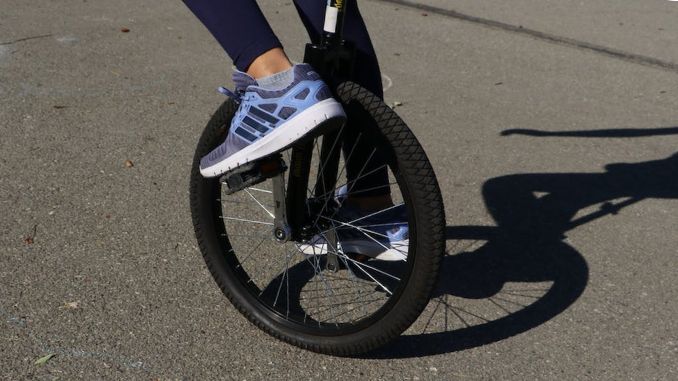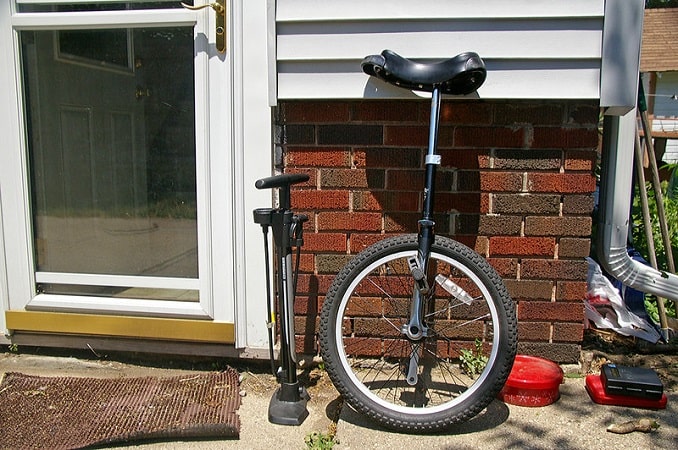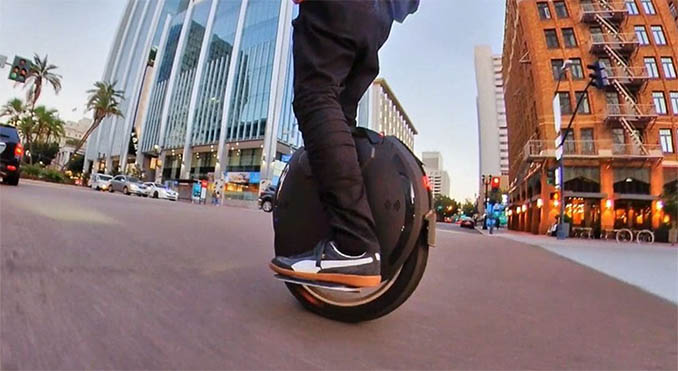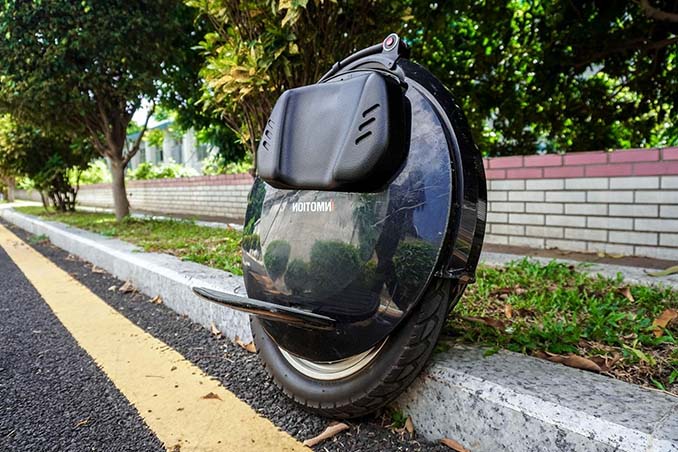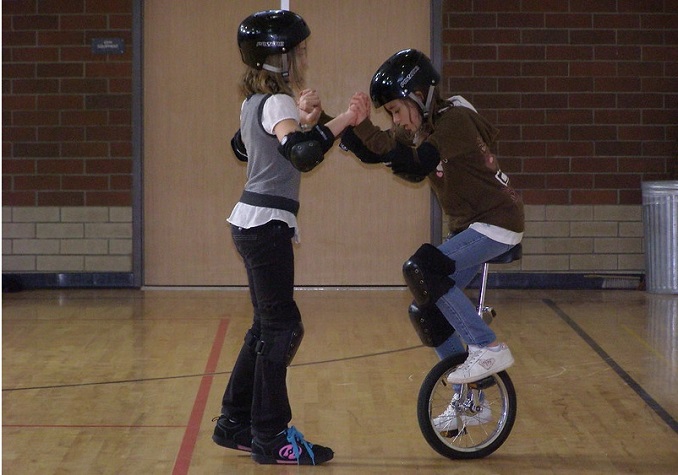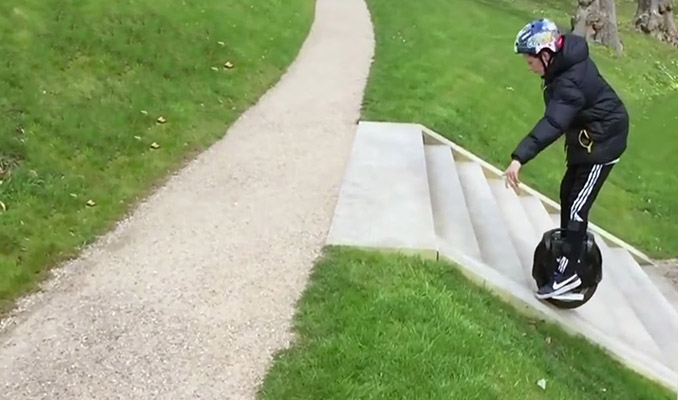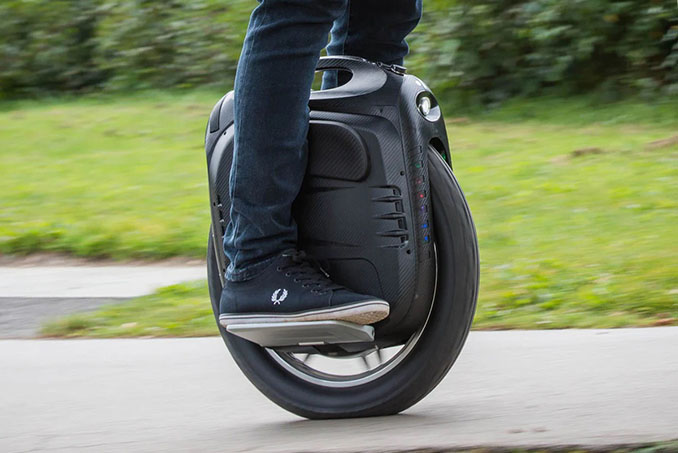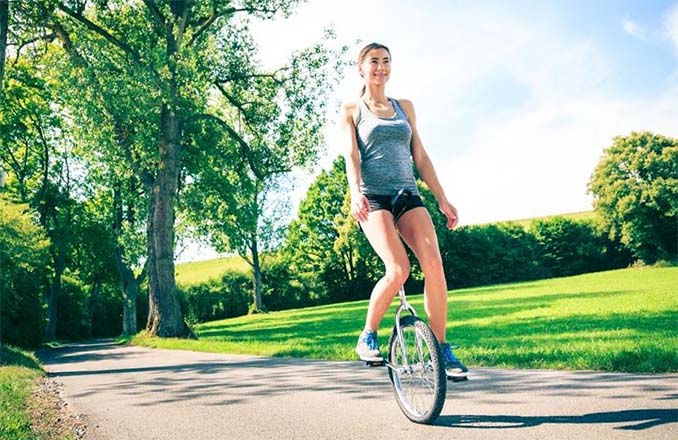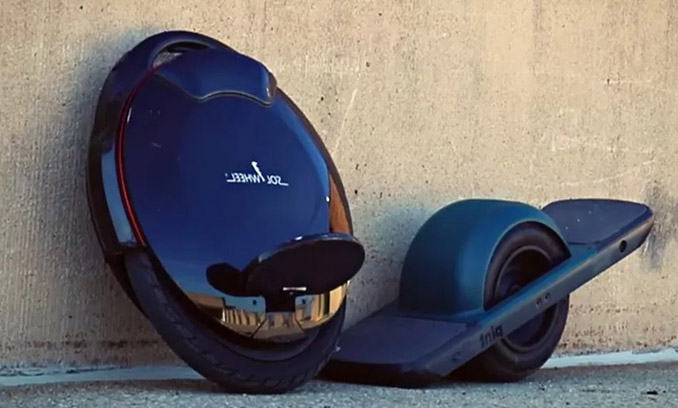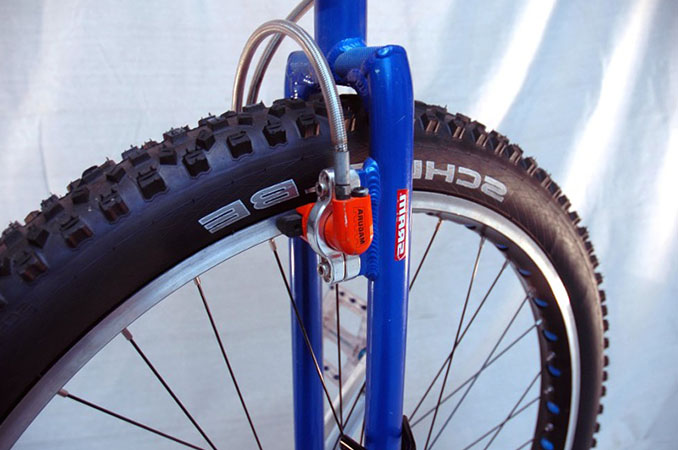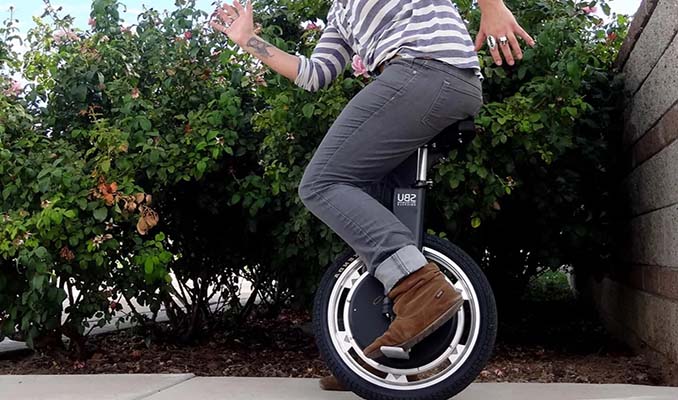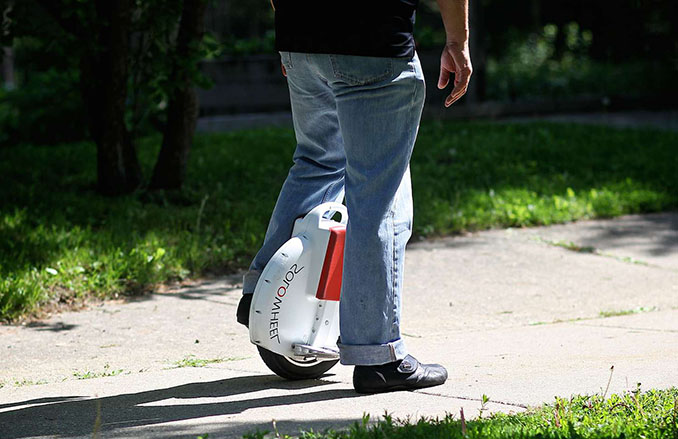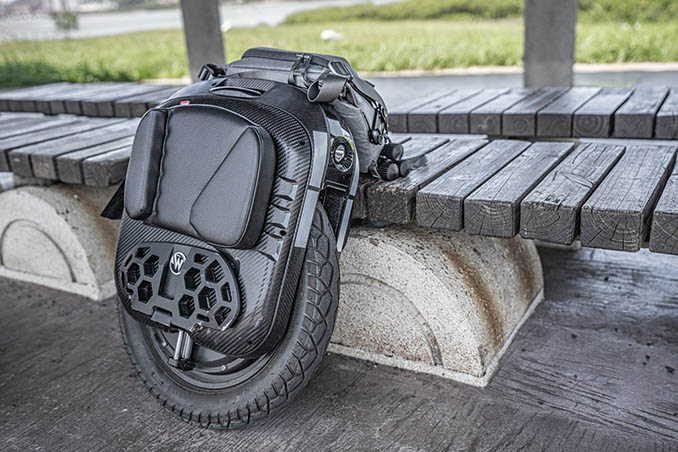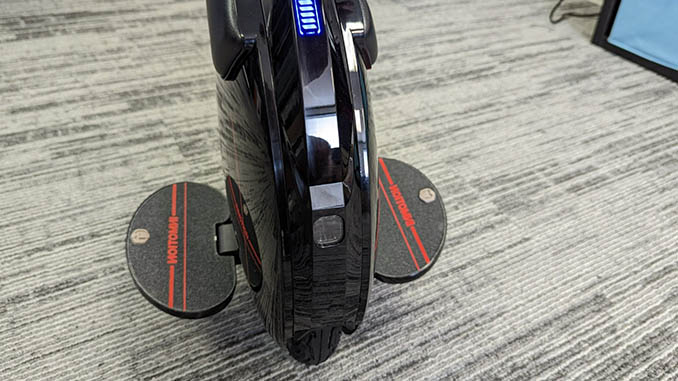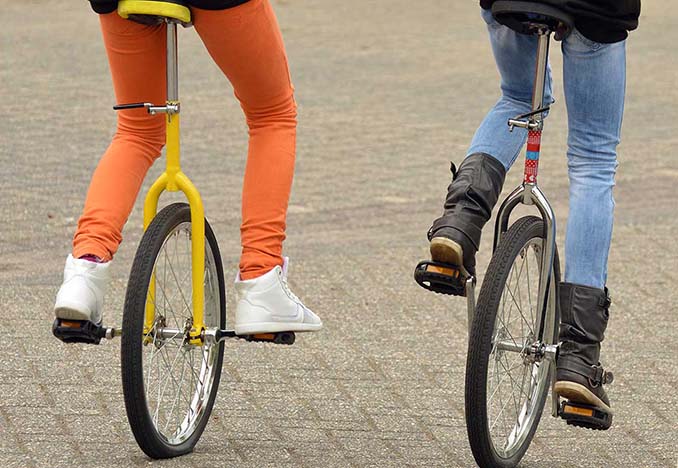When it comes to exercise, many people opt for walking as a simple, low-impact way to stay healthy and active. But what if there was another form of exercise that could provide even more benefits, all while being just as accessible as walking?
Enter unicycling. This unique mode of transportation is not only fun and challenging but also has the potential to offer a whole new world of fitness possibilities.
In this article, we’ll explore the idea of unicycling for fitness, discussing its efficiency, benefits, and how to get started. By the end, you might just find yourself itching to hop on a unicycle and ride your way to better health.
Is unicycling more efficient than walking?
One of the main questions people have when considering unicycling for fitness is whether it’s more efficient than walking.
The answer, in short, is yes. Unicycling is a full-body workout that engages more muscles than walking, and it also burns more calories per hour. Plus, because you’re constantly balancing on one wheel, unicycling requires a level of concentration and focus that can help improve your mental acuity over time.
So, while walking is an excellent low-impact exercise, unicycling offers a more challenging, dynamic, and efficient workout for those looking for something a little different.
Related:
- How Many Miles on a Unicycle to Lose Weight?
- What is Unicycle Cadence? Discover Its Importance and Techniques
The science behind unicycling efficiency
To understand why unicycling is more efficient than walking, we need to look at the science behind it. Unicycling is a form of “active balancing,” meaning that you’re constantly making small adjustments to maintain your balance and stay upright.
This requires constant engagement from your core muscles, as well as your leg muscles, which must work to keep the unicycle moving forward.
In contrast, walking is a more passive form of exercise that doesn’t require the same level of constant muscular engagement. While walking does work your leg muscles and can help improve cardiovascular fitness, it doesn’t engage your core muscles to the same extent as unicycling.
This means that, overall, unicycling provides a more efficient and comprehensive workout than walking.
Comparing unicycling and walking for fitness
Now that we understand the science behind unicycling’s efficiency, let’s take a closer look at how the two forms of exercise compare in terms of fitness benefits. Here are some key differences between unicycling and walking:
- Calorie burn: Unicycling burns significantly more calories than walking due to the increased muscle engagement and effort required. A study by the American Council on Exercise found that unicycling burns around 8-9 calories per minute, compared to just 3-4 calories per minute for walking.
- Muscle engagement: As mentioned earlier, unicycling engages more muscles than walking, particularly in the core, legs, and lower back. This leads to improved overall strength, balance, and coordination.
- Cardiovascular fitness: Both unicycling and walking can help improve cardiovascular fitness, but unicycling may offer a more intense workout due to the constant effort required to maintain balance and propel the unicycle forward.
- Mental benefits: Unicycling requires a high level of focus and concentration, which can help improve cognitive function and reduce stress. Walking can also have mental health benefits, but may not offer the same level of challenge and mental stimulation as unicycling.
Benefits of unicycling over walking
In addition to the fitness benefits mentioned above, unicycling offers several advantages over walking that make it an appealing option for those looking to switch up their exercise routine:
- Low impact: Like walking, unicycling is a low-impact exercise that’s easy on the joints, making it a great option for people with joint pain or those recovering from injury.
- Fun and unique: Unicycling is certainly a more unique and entertaining form of exercise than walking, which can help keep you engaged and motivated to continue working out.
- Versatility: Unicycles can be used on various terrains, including roads, sidewalks, and off-road trails, providing a diverse range of workout environments to keep things interesting.
- Space-saving: Unicycles are compact and easy to store, making them a convenient option for those with limited space for exercise equipment.
How to start unicycling for fitness
If you’re intrigued by the idea of unicycling for fitness, getting started is relatively simple. Here are some tips to help you begin:
- Purchase a unicycle: Choose a unicycle that’s appropriate for your height and intended use (more on this later).
- Learn the basics: Start by learning how to mount, balance, and dismount the unicycle, as well as how to steer and control your speed.
- Practice regularly: Like any new skill, unicycling requires regular practice to master. Start with short practice sessions and gradually increase the duration and intensity as you become more comfortable on the unicycle.
- Incorporate unicycling into your fitness routine: Once you’re confident in your unicycling abilities, consider incorporating it into your regular fitness routine. This could involve using the unicycle for short commutes, incorporating unicycling intervals into your workouts, or even participating in unicycling races or events.
Tips for safe and effective unicycling workouts
To ensure your unicycling workouts are both safe and effective, follow these guidelines:
- Wear appropriate safety gear: Always wear a helmet, wrist guards, and any other necessary protective gear when unicycling to minimize the risk of injury.
- Use proper form: Maintain good posture and core engagement while unicycling to maximize the fitness benefits and prevent injury.
- Warm-up and cool down: As with any exercise, warming up before unicycling and cooling down afterward is essential to prevent injury and maximize the effectiveness of your workout.
- Listen to your body: Pay attention to any signs of discomfort or pain while unicycling, and adjust your workout accordingly to prevent injury.
Unicycling for fitness: success stories
Many people have experienced the benefits of unicycling for fitness firsthand. For example, one unicyclist lost over 100 pounds by incorporating unicycling into his daily routine, while another found that unicycling helped her recover from a knee injury and improve her overall strength and balance. These stories demonstrate the potential of unicycling as a fun, effective, and accessible form of exercise for people of all ages and fitness levels.
Choosing the right unicycle for fitness
When selecting a unicycle for fitness, consider the following factors:
- Wheel size: Unicycles come in various wheel sizes, with larger wheels offering a faster, smoother ride and smaller wheels providing more control and maneuverability. For fitness purposes, a wheel size of 20-24 inches is generally recommended.
- Frame material: Unicycle frames can be made from steel, aluminum, or carbon fiber. Steel frames are typically the most affordable and durable option, while aluminum and carbon fiber frames offer a lighter weight and smoother ride.
- Seat: Look for a unicycle with a comfortable, padded seat to ensure a more enjoyable workout experience.
- Pedals: Choose a unicycle with grippy, non-slip pedals to help maintain control and prevent your feet from slipping during your workout.
Frequently Asked Questions
What is unicycling?
Unicycling is the act of riding a unicycle, which is a one-wheeled vehicle that requires the rider to balance on a single wheel while pedaling.
How does unicycling compare to cycling?
Unicycling is generally less efficient than cycling, as it requires the rider to use more energy to maintain balance and control the unicycle. Cycling also allows the use of gears to vary the resistance and speed of pedaling.
Is unicycling a good form of exercise?
Unicycling can be a great form of exercise, as it requires the use of many muscle groups, including the legs, core, and upper body. It also provides cardiovascular benefits and can help improve balance and coordination.
What types of unicycles are available?
There are several types of unicycles available, including standard unicycles, mountain unicycles, giraffe unicycles (which have a taller frame), and electric unicycles (which have a motor for assisted pedaling). Each type is designed for different riding styles and terrain.
How long does it take to become proficient at unicycling?
The amount of time it takes to become proficient at unicycling can vary depending on the individual and the amount of practice time put in. Some people may become comfortable riding a unicycle within a few weeks, while others may take several months or even years to master more advanced skills.
Final thoughts
Unicycling offers a unique and engaging alternative to walking for those looking to switch up their fitness routine. With its efficiency, full-body engagement, and numerous benefits, unicycling can be an excellent addition to any exercise regimen.
If you’re up for the challenge and ready to try something new, give unicycling a spin and experience the benefits for yourself. Who knows? You might just find your new favorite form of exercise.


